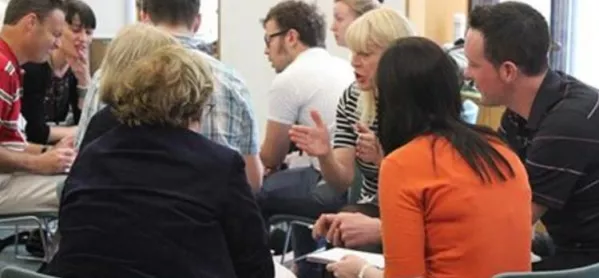Today the Department for Education published its initial teacher training allocations and teacher supply model for 2018-19.
The model estimates how many new teachers are needed to enter the teaching profession in 2019-20 - and by extension estimates how many postgraduate trainees are needed to start ITT courses in 2018-19.
Here’s what we learned from today’s figures:
- More postgraduate ITT places are needed - According to the model, slightly fewer than 1,400 more postgraduate ITT places are required in 2018-19, compared with the previous year (a 4.5 per cent rise). This is an increase of 431 primary places, a 4 per cent increase - and 948 secondary places, a 5 per cent growth.
The biggest increases will be needed in design and technology and physics, but no subject will require fewer places.
- More non-EBacc trainees are needed than previously thought - Last year’s model estimated reductions in demand for ITT places in non-English Baccalaureate subjects, as more teaching time was expected to be spent on EBacc subjects (English, mathematics, history or geography, the sciences and a language).
However, the model now shows a “shallower trajectory for the future increase in EBacc take-up”. This means the number of non-Ebacc trainees required is now not expected to fall by as much as previously forecast.
Earlier this year the government announced it is now only expecting 75 per cent of pupils to be studying EBacc subjects by 2022, rather than the target of 90 per cent of pupils sitting GCSEs in EBacc subjects in 2020 which it had previously set out in a consultation document.
- The number of qualified teachers is set to increase - The qualified teacher headcount is forecast to rise by 2 per cent, from 450,412 in 2016-17 to 461,262 in 2020-21. Growth will be larger in the secondary sector, where the headcount is estimated to grow from 208,904 to 216,758 (4 per cent). In the primary sector, it is expected to increase from 241,508 to 244,505 (1 per cent).
- The demographic bulge is moving through the system - The annual rate of increase in the primary pupil population is expected to slow from 1.9 per cent between 2016 and 2017 to 1.2 per cent between January 2017 and 2018, because of a dip in birth figures in 2009. It is then expected to continue slowing, with no growth forecast between January 2019 and 2020.
However, the demographic bulge will move through the system, causing a large increase in pupil numbers at secondary level. The secondary school population - not counting Year 12 and 13 pupils - is projected to rise from 2.72 million in January 2017 to 3.03 million by 2021 - a rise of 11.5 per cent over four years.
Schools standards minister Nick Gibb said: “We want all schools to be able to recruit the excellent staff they need and this data shows that we aim to train even more teachers next year, across both primary and secondary schools, and in the core academic subjects that help ensure all children can reach their potential.
“This supports our wider plans to attract more top graduates into the profession, by increasing incentives across all EBacc subjects and continuing to offer generous bursaries and grant funding - worth up to £26,000.”
Want to keep up with the latest education news and opinion? Follow Tes on Twitter and Instagram, and like Tes on Facebook




